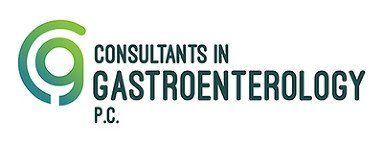QUALITY CARE
Get the comprehensive, compassionate care you deserve for all of your acute or chronic gastroenterological needs.

Barrett’s Esophagus
Barrett’s Esophagus refers to a change in the lining of the esophagus from squamous epithelium to intestinal metaplasia. This hardening of the throat tissue results in an increased risk of esophageal cancer and is its termed a pre-malignant condition. Barrett’s Esophagus is believed to be caused by chronic reflux of acid into the esophagus from the stomach (GERD).
Incidence of Barrett’s Esophagus
Twenty percent or more of adults have chronic GERD and of these 10 to 15 percent will have Barrett’s Esophagus; meaning that one to two percent of the American adult population potentially has this pre-malignant condition. Men and women with chronic severe reflux have over a 50 percent chance of having Barrett’s Esophagus. Overall, only about one-half percent per year of individuals with Barrett’s Esophagus will go on to develop esophageal cancer, but this rate is 40 times higher than normal. Considered an oddity until the 1970’s, the incidence of esophageal cancer has increased rapidly in the past 30 years and is now the fastest rising incidence of cancer in adults. Interestingly, esophageal cancer seems to affect men more than women.
Symptoms of Barrett’s Esophagus
There really are no symptoms of Barrett’s itself, but most patients have a history of long standing acid reflux and complain of heartburn or indigestion, occurring at least two times a week. Other symptoms may include: difficulty swallowing; sleeplessness due to heartburn; and persistent, unexplained cough or hoarseness. If you have these symptoms you should be checked for Barrett’s. Unfortunately, some patients with Barrett’s have very little heartburn and no warning, even though they have significant damage.
Diagnosis of Barrett’s Esophagus
Endoscopy and biopsy of the lining of the esophagus is currently the most accurate way to make the diagnosis of Barrett’s Esophagus. Barrett’s cannot be diagnosed by blood tests or x-rays.
Treatment of Barrett’s Esophagus
The first goal of treatment is to stop acid reflux and prevent further damage from occurring. This can usually be accomplished with daily doses of medications such as Prilosec, Prevacid, Aciphex, Protonix, and Nexium which reduce your production of stomach acid. Treatment relieves symptoms and may also reduce the risk of forming a stricture, a ring of scar tissue which may cause problems swallowing. You should know that successful treatment of the acid reflux does not cure the Barrett’s. Even if symptoms are well controlled, the cancer risk remains and periodic endoscopy examinations every one to three years are recommended.
Pathology
Biopsies taken at the time of endoscopy are sent for examination by a pathologist. The main thing we ask the pathologist to look for is “dysplasia.” Dysplasia is a precancerous change (not cancer yet) which usually occurs before cancer ever develops. It can be thought of as an early warning signal and is often classified either as low grade or high grade dysplasia. Low grade dysplasia is seen most often and is less cause for concern. In this instance reflux must be controlled and surveillance needs to be more frequent. Endoscopic eradication therapy is a therapeutic option for the treatment of patients with confirmed low-grade dysplasia. Over time, dysplasia may progress from low grade to high grade, then sometimes to cancer. If high grade dysplasia is found, the risk of cancer is much greater. Patients with high grade dysplasia are candidates for eradication therapy such as radiofrequency ablation. If high grade dysplasia persists, there is a high risk of progression to cancer. In this circumstance, more aggressive treatment is needed to move quickly before cancer develops. This involves surgery to remove part of the esophagus which contains the abnormal area of Barrett’s, even if a definite cancer is not found.
Surgical Management of Barrett’s Esophagus
There are two types of surgery performed in cases of Barrett’s. If no dysplasia is present and symptoms of acid reflux do not respond to intensive medical therapy, surgery may be necessary to re-tighten the loosened lower esophageal sphincter, thus preventing further acid damage. This operation does not remove the area of Barrett’s which still must be periodically re-biopsied with endoscopy. In the past, this procedure required open surgery with a full incision and a prolonged recovery period. Newer laparoscopic techniques allow a much simpler procedure with several mini-incisions and a shortened recovery period.
Alternative Management of Barrett’s Esophagus
There are several “minimally invasive” techniques being studied to treat dysplasia associated with Barrett’s Esophagus. These include radiofrequency ablation (RFA), photodynamic therapy (PDT), thermal ablative therapy, and endoscopic mucosal resection (EMR). Each technique has been shown to be a potentially viable treatment of this condition, and radiofrequency ablation in now performed widely with very favorable results in most cases.
